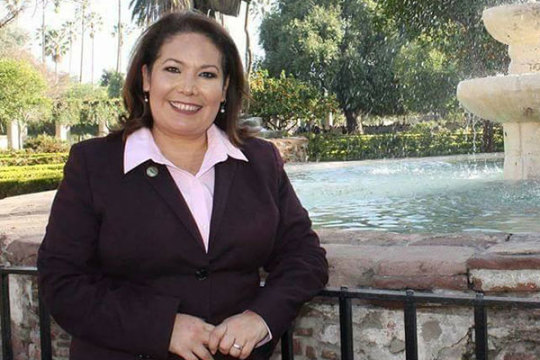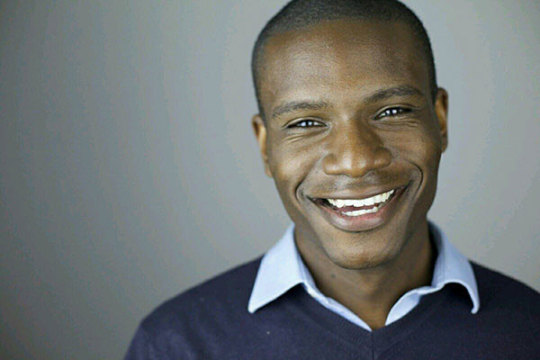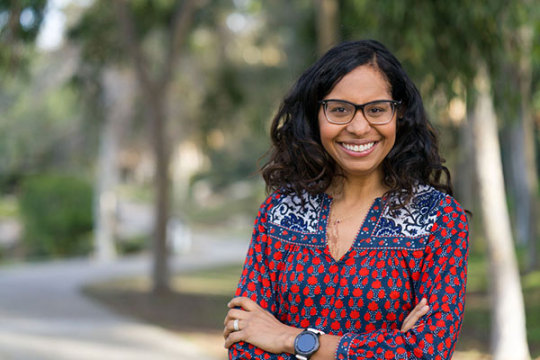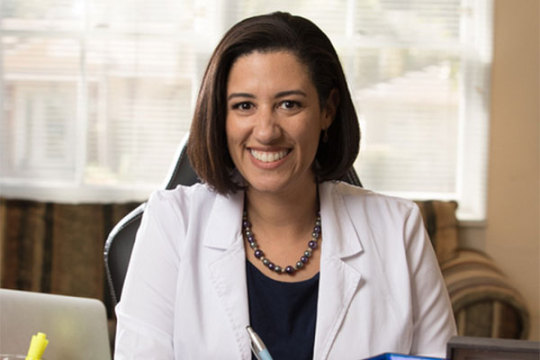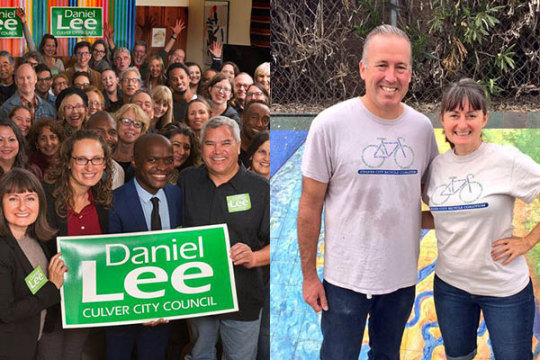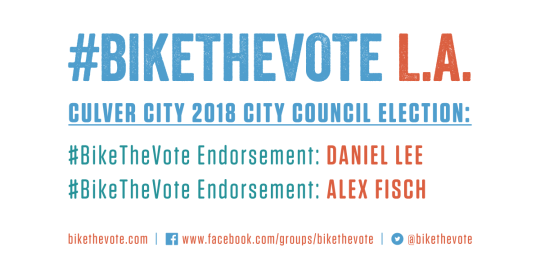Candidate campaign page: http://pattylopez2018.com/
Patty Lopez served as Assembly Member for District 39 from 2014-2016 and seeks to take back the seat in this 2018 special election. While Lopez did not establish a track record that was particularly supportive or responsive to local advocacy efforts on safe streets during her assembly term, we are encouraged by her response to our questionnaire, in which she displays a commitment to support a more sustainable transportation system that serves all Angelenos equitably.
Bike The Vote L.A. 2018 Primary Grade: B
(See below for full candidate questionnaire response)
1. The California Air Resources Board estimates that transportation accounts for 37% of California’s annual carbon emissions. What actions would you take as assemblymember to ensure that California creates a more sustainable transportation system?
I believe in the full expansion of public transportation that is underway in Los Angeles County and I support the Bay Area Rapid Transit system. I also favor the creation of a broader regional transportation system similar to the RER in Paris or Cross Rail in London that will connect all of the greater Los Angeles region. I would ideally like a system that links the outer San Gabriel Valley, the northern San Fernando Valley, the Santa Clarita Valley, the Conejo Valley, the South Bay, Orange County, the Inland Empire (both Riverside and San Bernardino) to Downtown Los Angeles, Beverly Hills/Century City, Hollywood, Warner Center, and Santa Monica. These new high speed routes would help alleviate traffic, improve the environment, and provide a non-carbon-emitting alternative for transit for individuals spread out across a vast area. Moreover, it would help reduce stress in the lives of individuals who now find themselves spending hours behind the wheel on a daily basis. It will significantly reduce vehicle miles for most southern Californians.
Such a system would do more than simply be for transportation. Park and ride stations in more suburban areas could be used to create revenue for local projects such as the preservation of open space and outdoor recreational areas as well as their maintenance. Shopping center developments could be encouraged with park and ride stations in order to add to the convenience of daily life for individuals with the idea of reducing trips. California has a large suburban population and many people enjoy living in single family homes in suburban neighborhoods. We have to create options that will help these residents minimize the amount of time that is spent in cars. Stations in urban areas could be used to help support vital urban infill developments and would provide the necessary infrastructure to build high density housing projects including much needed affordable housing. Creating these types of neighborhoods and encouraging developers to build this way will allow hundreds of thousands of Californians the option of not having to get into their cars. Our current public transportation system is a good start but many of our lines (particularly light rail and busways) do not have the capacity for the type of high density residential development that we in Southern California want and need. We need to make sure that we have a system that can support the increased flow of individuals.
However, I add a very important caveat. The planning and construction of this transportation system needs to be done in a way that is sensitive to the communities that it will ultimately run through. I have opposed the current high speed rail project. This is not because I oppose high speed rail but because the planned route currently will go through the heart of my district above ground without concern to the noise, blight, and potential safety concerns it will cause for local communities. The current plans disregard the potential economic harm for my own hometown of San Fernando. The City of San Fernando is a small, working class, overwhelmingly Latino city in the northeast San Fernando Valley with a large immigrant population. We take great pride in our city and have worked very hard over the years to build it up. Today, our public spaces are kept clean and well-maintained and our little city is home to hundreds of thriving, small, independent businesses, the majority of which are minority owned. If you come and visit our city, you will find our main business section filled with boutiques, restaurants, cafes, even a cupcakery. And you will find numerous professional businesses (lawyers, accountants, doctors, dentists, realtors, bankers, investment brokers) that cater to working poor immigrants and Spanish speakers like myself who otherwise do not have access to often much needed professional services.
The current high speed rail route proposes to bisect our city in half, create irreparable damage to the local business community, and does not plan for a stop in San Fernando (where presumably commuters from across the north Valley could use to access downtown Los Angeles and other areas). We need this changed and we need this fixed. Progress should not come at the expense of others, especially others who generally lack the resources to fight back. But the concept is applicable to everyone. If the best route for high speed rail ran through the middle of the Golden Triangle of Beverly Hills and the high speed rail plan called for building the project as is currently proposed for San Fernando, I would stand in solidarity with the good people of Beverly Hills to oppose such a project because of the harms it would create.
A regional transportation system (like that which exists in Paris and is under construction in London) is much needed and the amount of time, money, and even some inconvenience will be well worth the investment. However, this investment must be built in a way that is beneficial to all and protects communities that it seeks to serve. Progress cannot come at the expense of individuals, especially the most vulnerable like those of us who live in the 39th District. While many will certainly resist building, we can get a system built far more quickly and efficiently if we allow neighborhood input and we listen to the concerns of those who we build for.
2. Cap & trade funds offer a unique opportunity to prioritize sustainable transportation, particularly in low-income neighborhoods negatively affected by pollution caused by cars. Do you support dedicating a portion of cap and trade funds towards the Active Transportation Program to help fund better pedestrian and bicycle infrastructure?
Yes. Improved pedestrian and bicycle infrastructure will help lower carbon emissions. The goal of cap and trade is to allow some polluting externalities, tax those externalities, and then use the revenue to pump back into the environment. Using cap and trade funds for the Active Transportation Program is just plain common sense.
3. In Los Angeles, low-income communities of color are disproportionately burdened by the impacts of streets designed primarily for cars, without receiving proportional funding for their mobility modes like walking, biking, and public transit. Would you support legislation to add a ‘complete streets’ policy to SB 1, California’s newly augmented gas tax, to require all street and highway projects to incorporate the needs of pedestrians, bicyclists and transit-dependent communities?
Yes. Many people do not realize how large a segment of the population of the City of Los Angeles (erroneously known as a “car city”) is dependent upon public transportation and has no regular access to vehicular transportation. Many of these individuals are working poor and they cannot get to work and support their families without this public transportation. Incorporating the needs of pedestrians, bicyclists, and transit-dependent communities will help the poorest Californians.
When I served in the State Assembly, I was able to take a small but very practical step towards benefiting the needs of pedestrians, bicyclists, and transit-dependent communities. When I first arrived, the district Assembly office was located in an office building located next to a freeway in Arleta. There was not even a bus-stop for over a mile for those who did not have cars. It was in an out of the way location to begin with and had little parking but basically, no constituent (or staffer for that matter) could walk, cycle, or take public transportation to the office. I moved to the office space to downtown San Fernando. Individuals who lived in the city could easily walk and bike there. And public transportation ran right in front of it. If you were transit-dependent, you were no longer cut off from your State Assembly office.
4. California law regarding the position bicyclists can occupy in a traffic lane is written in a confusing manner. The typical condition – in which the rightmost lane is too narrow for a car and a bicycle to travel safely side-by-side and the bicyclist is thus allowed to use the full lane – is written as an exception rather than the default standard. As a result, despite public information campaigns such as “Every Lane Is A Bike Lane,” there is frequently confusion from the general public and even law enforcement agencies on the legality of bicyclists riding in traffic lanes on California roads. Do you support re-wording traffic law to clarify the right of people on bikes to ride to maximize their visibility and safety?
Yes. Our law currently specifies that pedestrians take precedent over cars when it comes to pedestrian crosswalks and the right of way when cars are seeking to make turns. We ought to make this clear when it comes to cyclists. I would support legislation making it clear that a traffic lane is a cyclist lane unless otherwise specifically provided for (For example, as much as I support cycling, I don’t think it’s a good idea to allow bike riding on freeways or drivers understand that it was the exception to the rule). This would clear up confusion and save lives.
5. A recent study by the National Transportation Safety Board found that speeding was one of the most common factors in crashes, and one of the highest contributors towards fatal crashes. Despite this fact, speed limits across California are consistently raised due to a state law that sets speed limits at the 85th percentile of measured driving speeds. Do you support reform to the 85th percentile rule to give local jurisdictions the ability to set speed limits to better promote safe driving?
Yes. This is a common sense solution that will help us save lives.
6. California’s ongoing housing crisis challenges cities and communities to provide solutions towards meeting California’s demand for housing. Do you support efforts at the state level to accommodate smart growth, transit-oriented development, and sustainable communities that empower residents to get around on foot, by bike, and on quality public transit? What specific policies you would pursue to promote sustainable and affordable living for Californians?
Senator Scott Wiener’s bill, SB 827, is quite brilliant. It is a massive step in the right direction towards solving the affordable housing crisis, which is a top priority of my campaign. However, I am not committing, yet, to supporting it in its current form. There are details regarding local control and State Constitutional issues that need to be hammered out still. But to answer the question directly, I do support policies that will enable the construction of more affordable housing oriented towards transit use.
All affordable housing created within larger developments must be completely integrated. Separate entrances created (with the exception of separate entrances that would have been created for a few units that would have existed in all market rate housing developments) for market-rate tenants and affordable housing tenants must be prohibited. There also cannot be use restrictions on common areas. I also support requiring that developments be designed to favor pedestrian access and integration with the cityscape. I am also willing to look into ways in which CEQA policies can be relaxed in certain, limited instances for the purpose of building more affordable housing. Finally, I support creating affordable housing minimums for certain jurisdictions where transit oriented housing can be developed. Communities that do not build their required share could be subject to fines that would go into a state affordable housing trust. Communities that built more would be rewarded.


